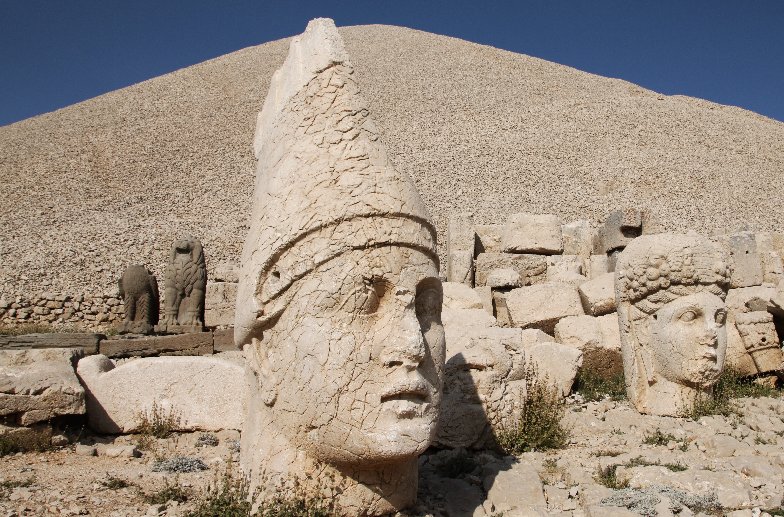Mount Nemrut: ‘Throne Of The Gods’ – Mysterious Royal Tomb Surrounded By Gigantic Sculptures
A. Sutherland - AncientPages.com - Mount Nemrut is an awe-inspiring and enigmatic place located on one of the highest peaks of the Eastern Taurus mountain range, at an altitude of over 2,000 m above sea level, in south-east Turkey.
We know this ancient place as Nemrut Dagi - the Hierotheseion (temple-tomb and the house of the gods) built by the late Hellenistic King Antiochos I of Commagene (69-34 B.C.), who dedicated it to himself.
Western terrace of the Nemrut Dagi, Turkey: Antiochos (left); Herakles (right). Credit: Bernard Gagnon/ Wikipedia
The unique mountain top shrine was completely unknown to all until its discovery in 1881 by German engineer Karl Sester. At the time of the discovery, the megalithic statues were said to be intact. Archaeological excavations began for the first time in 1953 when the American School of Oriental Research conducted precise surveys of the site.
With a diameter of 145 m, the 50 m high funerary mound of stone chips is surrounded on three sides by terraces to the east, west, and north directions. Two separate antique processional routes radiate from the east and west terraces.
Antiochus I's sanctuary is flanked by huge statues 8-9 m (26-30 ft) high of himself, two lions, two eagles, and various Greek, Armenian, and Iranian gods, such as Vahagn-Hercules, Aramazd-Zeus, or Oromasdes (associated with the Iranian god Ahura Mazda), Bakht-Tyche, and Mihr-Apollo-Mithras.
Mount Nemrut - East Terrace Nemrut. Image credit: Klearchos Kapoutsis, Santorini, Greece via wikipedia
These statues were once seated, with names of each god inscribed on them. Later, the heads of the statues have been removed from their bodies and most likely deliberately damaged (especially their noses). Today they are found scattered throughout the site but they have never been restored to their original locations. Additionally, after numerous earthquakes and devastation, the stone heads look as if they have been cut off from the trunk.
The site also preserves stone slabs with bas-relief figures that are thought to have formed a large frieze. These slabs display the ancestors of Antiochus, who included Armenians, Greeks, and Persians. The Hierotheseion of Antiochos I is one of the most ambitious constructions of the Hellenistic period.
A highly developed technology was used to build the colossal statues and stelae, the equal of which has not been found anywhere else for this period. The syncretism of its pantheon and the lineage of its kings, which can be traced back through two sets of legends, Greek and Persian, is evidence of the dual origin of this kingdom's culture.
Is There A Treasure Hidden On The Top Of Mount Nemrut?
Are ancient secrets hidden inside the mountain? Archaeologists believe that the mound hides the tomb of King Antioch, but they are not entirely convinced. In addition, there are numerous legends about the treasure hidden on the top of the mountain.
However, the truth regarding both the tomb and possible treasures has not been revealed during archaeological studies lasting for more than half a century. Even the use of dynamite, which only lowered the mound by 5 m, did not reveal anything of value.
Archaeologists have found an ancient glass shaft, which according to experts indicates a unique knowledge of advanced astronomy of people of that period. It runs towards the slope at an angle of 35 degrees and is about 150 meters long. Computer analysis has shown that two days of the year, the sun’s rays would illuminate the bottom of the shaft - once when in line with the constellation of Leo and another time when in line with Orion.
The ancient kingdom of Kommagene (Commagene) - a small mountain kingdom located in what was Asia Minor, in Eastern Anatolia - was relatively short-lived but it survived as an independent kingdom until 72 AD when it was incorporated into the Roman Empire.
Mount Nemrut - West Terrace. Left: the head of Apollo/Mithra/Helios/Hermes. Klearchos Kapoutsis, Santorini, Greece/Wikipedia
The magnificent Nemrut statues are located within a first-degree earthquake zone very close to the East Anatolian Fault, which is seismically active. Therefore, the tumulus, statues, and stelae are vulnerable to earthquakes. The height of the tumulus has been reduced from its estimated original 60 m due to weathering, previous uncontrolled research investigations, and climbing by visitors.
The first version of this article was originally published on August 6, 2015
Written by – A. Sutherland - AncientPages.com Senior Staff Writer
Copyright © AncientPages.com All rights reserved. This material may not be published, broadcast, rewritten or redistributed in whole or part without the express written permission of AncientPages.com
More From Ancient Pages
-
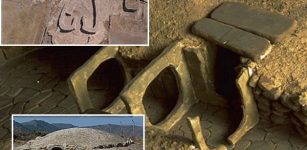 Sculptures-Menhirs Dated To The Copper Age Unearthed In Los Millares (Almería) Spain
Archaeology | Mar 14, 2022
Sculptures-Menhirs Dated To The Copper Age Unearthed In Los Millares (Almería) Spain
Archaeology | Mar 14, 2022 -
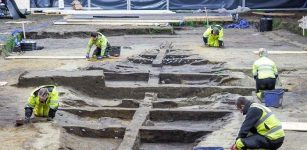 Reconstrucion Of The 19-Meter-Long Gjellestad Viking Ship In Progress
News | Oct 9, 2023
Reconstrucion Of The 19-Meter-Long Gjellestad Viking Ship In Progress
News | Oct 9, 2023 -
 Why Is Europe Called Europe?
Ancient History Facts | Apr 21, 2016
Why Is Europe Called Europe?
Ancient History Facts | Apr 21, 2016 -
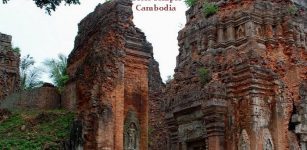 Ancient Wall Of Lolei Temple Built In 893 BC Unearthed In Siem Reap, Cambodia
Archaeology | Apr 20, 2020
Ancient Wall Of Lolei Temple Built In 893 BC Unearthed In Siem Reap, Cambodia
Archaeology | Apr 20, 2020 -
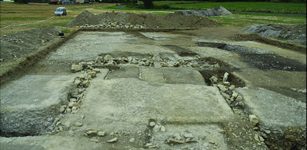 Stone Homes Of Europe’s First Megalithic Builders Discovered
Archaeology | Feb 22, 2023
Stone Homes Of Europe’s First Megalithic Builders Discovered
Archaeology | Feb 22, 2023 -
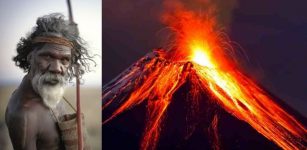 Aboriginal Myth Of Kinrara’s Eruption 7,000 Years Ago Confirmed True By Modern Science
Archaeology | May 14, 2017
Aboriginal Myth Of Kinrara’s Eruption 7,000 Years Ago Confirmed True By Modern Science
Archaeology | May 14, 2017 -
 Beads Show European Trade In African Interior Used Indigenous Routes
Archaeology | Sep 17, 2022
Beads Show European Trade In African Interior Used Indigenous Routes
Archaeology | Sep 17, 2022 -
 Inventory Stela And Its Message: Controversy About This Artifact Still Remains
Artifacts | Jul 15, 2017
Inventory Stela And Its Message: Controversy About This Artifact Still Remains
Artifacts | Jul 15, 2017 -
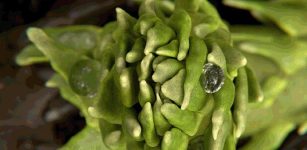 407-Million-Year-Old Plant Fossil Challenges Long-Held Theory On Fibonacci Spirals Found In Nature
Evolution | Jun 22, 2023
407-Million-Year-Old Plant Fossil Challenges Long-Held Theory On Fibonacci Spirals Found In Nature
Evolution | Jun 22, 2023 -
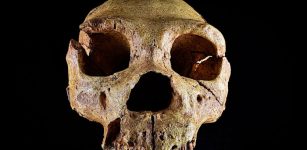 600,000-Year-Old Finds Reveal Canterbury Was Home To Britain’s Earliest Humans
Archaeology | Jun 22, 2022
600,000-Year-Old Finds Reveal Canterbury Was Home To Britain’s Earliest Humans
Archaeology | Jun 22, 2022 -
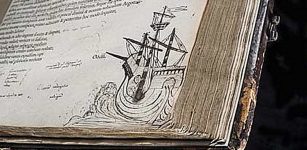 January 2016: Lost Library Of John Dee Revealed In A Special Exhibition
Archaeology | Jan 24, 2016
January 2016: Lost Library Of John Dee Revealed In A Special Exhibition
Archaeology | Jan 24, 2016 -
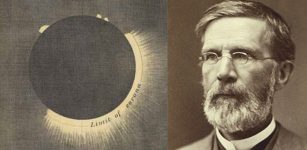 Why Did A Solar Eclipse Save George Davidson’s Life In Alaska?
Ancient History Facts | Apr 3, 2020
Why Did A Solar Eclipse Save George Davidson’s Life In Alaska?
Ancient History Facts | Apr 3, 2020 -
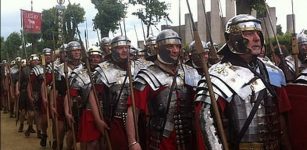 Camp Used By 10,000 Roman Soldiers Sent To Conquer Northwest Iberia – Discovered
Archaeology | Jun 24, 2021
Camp Used By 10,000 Roman Soldiers Sent To Conquer Northwest Iberia – Discovered
Archaeology | Jun 24, 2021 -
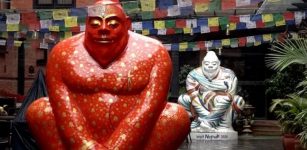 Why Are Statues Of Mythical Yeti Dividing People In The Himalayas?
Featured Stories | Feb 18, 2020
Why Are Statues Of Mythical Yeti Dividing People In The Himalayas?
Featured Stories | Feb 18, 2020 -
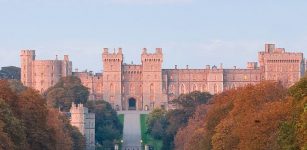 Where Does The Expression ‘Saved By A Bell’ Come From?
Ancient History Facts | Oct 16, 2019
Where Does The Expression ‘Saved By A Bell’ Come From?
Ancient History Facts | Oct 16, 2019 -
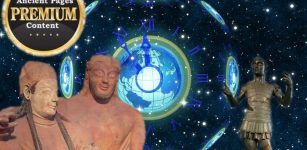 Did Etruscans Solve The Mystery Of Synchronicity And The Secret Language Of The Stars?
Civilizations | Jul 5, 2018
Did Etruscans Solve The Mystery Of Synchronicity And The Secret Language Of The Stars?
Civilizations | Jul 5, 2018 -
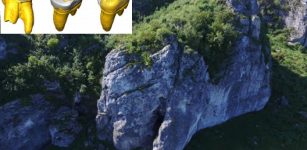 Extraordinary Find: The Oldest Neanderthal DNA Of Central-Eastern Europe
DNA | Sep 10, 2020
Extraordinary Find: The Oldest Neanderthal DNA Of Central-Eastern Europe
DNA | Sep 10, 2020 -
 On This Day In History: Isaac Asimov Creator Of Science Fiction Was Born – On Jan 2, 1920
News | Jan 2, 2017
On This Day In History: Isaac Asimov Creator Of Science Fiction Was Born – On Jan 2, 1920
News | Jan 2, 2017 -
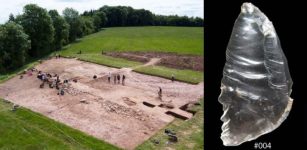 Prehistoric Brits Used Rare Rock Crystals To Mark Burial Sites – New Study
Archaeology | Aug 10, 2022
Prehistoric Brits Used Rare Rock Crystals To Mark Burial Sites – New Study
Archaeology | Aug 10, 2022 -
 Ostracism: Political Practice In Ancient Athens
Ancient History Facts | May 7, 2019
Ostracism: Political Practice In Ancient Athens
Ancient History Facts | May 7, 2019



